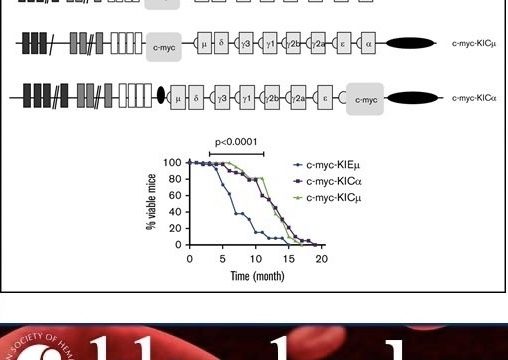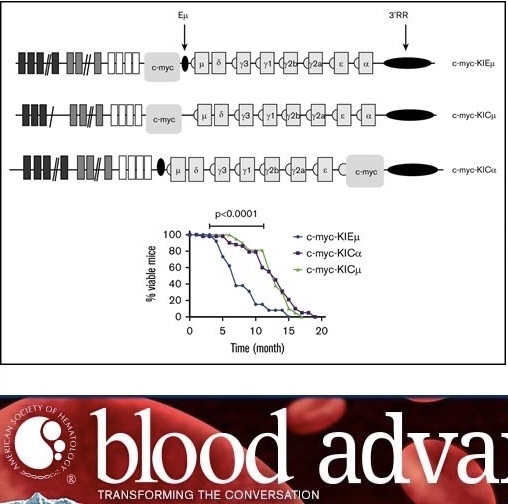
Eμ and 3’RR transcriptional enhancers of the IgH locus cooperate to promote c-myc-induced mature B-cell lymphomas.
Eμ and 3’RR transcriptional enhancers of the IgH locus cooperate to promote c-myc-induced mature B-cell lymphomas.
Abstract
Numerous B-cell lymphomas feature translocations linking oncogenes to different locations in the immunoglobulin heavy chain (IgH) locus. During Burkitt lymphoma (BL), IgH breakpoints for c-myc translocation stand either close to JH segments or within switch regions. Transcription, accessibility, and remodeling of the IgH locus are under the control of the 2 potent cis-acting enhancer elements: Eμ and the 3′ regulatory region (3’RR). To ensure their respective contributions to oncogene deregulation in the context of the endogenous IgH locus, we studied transgenic mice harboring a knock-in of c-myc in various positions of the IgH locus (3′ to JH segments, 5′ to Cμ with Eμ deletion and Cα). The observed spectrum of tumors, kinetics of emergence, and transcriptome analysis provide strong evidence that both Eμ and 3’RR deregulate c-myc and cooperate together to promote B-cell lymphomagenesis. Transgenics mimicking endemic BL (with c-myc placed 3′ to JH segments) exhibited the highest rate of B-cell lymphoma emergence, the highest Ki67 index of proliferation, and the highest transcriptomic similarities to human BL. The 3’RR enhancer alone deregulated c-myc and initiated the development of BL-like lymphomas, suggesting that its targeting would be of therapeutic interest to reduce c-myc oncogenicity in vivo.
© 2020 by The American Society of Hematology.

